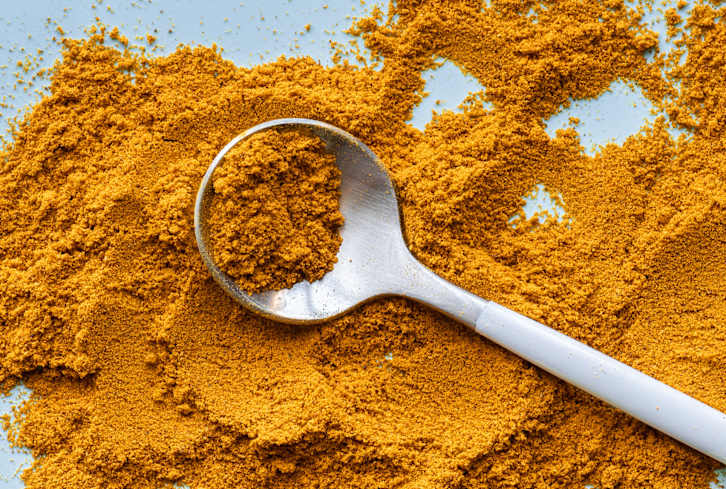Advertisement
6 Creative Pineapple Peels Uses + Health Benefits

Are you tossing away your pineapple peels—the tough, inedible skin that covers this succulent, sweet tropical fruit? Well, there are actually some health-packed (and planet-friendly) reasons you might consider keeping and reusing the peels next time.
The benefits of pineapple peel.
Native to the Americas and a member of the bromeliad family (the only edible fruit of its kind), the pineapple (ananas comosus) is a nutritious all-star hailed for its multiple gut-healing and culinary applications around the world. A study published by Biochemical Reports in 2016 reports that pineapples have been used extensively in folk medicine for healing, health-promoting purposes since ancient times1. Pineapple's unique anatomy and properties make it a compelling, tropical emblem—plus, the fruit is loaded with essential vitamins, minerals2, fiber, antioxidants, and helpful compounds that can help fight inflammation and disease3.
Beyond their plump golden interior, the stem4 and peel (and sometimes leaves) of pineapple plants are also praised for their anti-inflammatory5 and immune-supporting6 abilities. That's because they contain bromelain, a type of digestive enzyme derived from pineapple juice, peel, and stem. Among its multiple uses, bromelain's5 therapeutic benefits expand from treating osteoarthritis7 and cardiovascular disease8 to reducing oxidative stress and inflammation9.
We can all agree that food is one of the most powerful tools at our disposal when it comes to combating inflammation. Yet, how we produce, process, consume, and discard our food is also an imperative agent of our individual, social, and environmental transformation. If you need some extra-convincing incentives for reusing your pineapple peels, let's take a quick look at the intersection between pineapple biowaste and our planet.
Pineapple peels from an environmental perspective.
Within the health food space, there's an incontestable (even urgent) call toward a more sustainable, equitable, healthier society. One example of this Earth-friendly wave centers on food waste. From upcycled foods to sustainable agricultural practices, food industries and consumers alike are looking for better ways to reduce and reuse food waste efficiently.
Back to pineapple: On a macro level, waste products from the fruit's apparently inedible bits (hello, peels), can serve as a valuable ingredient for the food industry and beyond. There are a number of planet-friendly pineapple peel applications, such as using fermented pineapple peels10 as protein sources and making sustainable, leather-like textiles or a source of energy production.
Though, on a micro-level (as in when it comes to your home practice), rest assured that composting isn't the only viable alternative for repurposing your pineapple peels.
Innovative ways to use pineapple peel.
We've learned about the refreshing, probiotic-rich benefits of pineapple tepache tonic and the bowl-of-sunshine quality of this vegan summer corn soup. Let's now dive into some fresh ways to use pineapple peels to make both your body and planet smile:
Drink up pineapple agua.
As simple as it sounds, pineapple water is a mighty, easy way to reap pineapple peels' benefits. Start by placing the outer skins (not the fruit) in a medium saucepan, add 2 to 3 cinnamon sticks (optional), and let it simmer on low heat for 25 to 35 minutes. Turn the heat off and let this concoction steep for another 30 minutes before straining the peels out.
You can serve this peel-infused agua hot or cold and sweetened to taste. Also, this pineapple peel agua makes for an excellent water-based flavoring substitute worth keeping around your kitchen.
Create a pineapple peel tea ritual.
A pineapple peel tea ritual (or any consciously crafted ritual, for that matter) offers a unique and intimate opportunity to become mindful of ourselves from the inside out. Inspired by Thich Nhat Hanh's words, drink your tea slowly and reverently, as if it is the axis on which the Earth revolves, the health benefits derived from following a tea ritual stretch past the cup.
Because inflammation and stress are at the heart of most modern-day diseases, the ritual of brewing and drinking tea might be a good option to help us slow down. One study found that participants who drank black tea four times a day for six days a week had lower cortisol levels11 (stress hormones) than those who drank a placebo. Add a pineapple peel to your ritual, and you have found yourself a delightful, anti-inflammatory treat.
Give your face a tropical glow-up.
As an enzyme powerhouse, bromelain's topical application on the skin is thought to help alleviate acne12 by sweeping away dead skin cells and improving skin's complexion overall. Although bromelain-instilled products aren't new to the clean-beauty realm, you can use the same pineapple peel agua recipe above as a gentle toner rich in vitamin C, should you prefer to go the DIY route.
Go for a pineapple bowl.
If you're in the mood for adding a tropical lift to your next meal, why not try eating out of a fresh pineapple bowl? Simply combine the delicious juice that pools at the bottom of the fruit with a healthy and nutritious filling, and enjoy! (You can even fill the pineapple bowl with your favorite smoothie recipe, add a straw, and drink up.)
Make a delicious, antioxidant-rich juice (or cocktail).
When it comes to making any drink healthy (and a little more tangy), pineapple peel can be a great addition. To use pineapple peel agua as your next juice base, boil the skins first and cool them down completely (see directions above). Next, strain the water, put it in a blender, and add any additional juice ingredients of your choice.
Pickle them out.
If you've pickled fruits or veggies before, you know there are multiple benefits associated with this type of food prep. Not only is pickling a convenient, planet-friendly way to make food last (and taste delicious), but it's also a creative outlet with infinite iterations.
Here's a great way to make a quick pickle at home. You can use both the pineapple fruit and peel to add more flavor. Just make sure to clean the skin (preferably organic) before adding them to a pickling jar.
12 Sources
- https://pubmed.ncbi.nlm.nih.gov/27602208/
- https://pubmed.ncbi.nlm.nih.gov/24959679/
- https://pubmed.ncbi.nlm.nih.gov/19149749/
- https://pubmed.ncbi.nlm.nih.gov/8053898/
- https://pubmed.ncbi.nlm.nih.gov/23304525/
- https://www.sciencedirect.com/science/article/pii/S2589936820300463
- https://www.ncbi.nlm.nih.gov/pmc/articles/PMC538506/
- https://www.ncbi.nlm.nih.gov/pmc/articles/PMC3529416/
- https://pubmed.ncbi.nlm.nih.gov/18482869/
- https://www.sciencedirect.com/science/article/abs/pii/S1466856419300554
- https://pubmed.ncbi.nlm.nih.gov/17013636/
- https://www.sciencedirect.com/science/article/pii/S1319562X20305945
Watch Next
Enjoy some of our favorite clips from classes
Enjoy some of our favorite clips from classes
What Is Meditation?
Mindfulness/Spirituality | Light Watkins
Box Breathing
Mindfulness/Spirituality | Gwen Dittmar
What Breathwork Can Address
Mindfulness/Spirituality | Gwen Dittmar
The 8 Limbs of Yoga - What is Asana?
Yoga | Caley Alyssa
Two Standing Postures to Open Up Tight Hips
Yoga | Caley Alyssa
How Plants Can Optimize Athletic Performance
Nutrition | Rich Roll
What to Eat Before a Workout
Nutrition | Rich Roll
How Ayurveda Helps Us Navigate Modern Life
Nutrition | Sahara Rose
Messages About Love & Relationships
Love & Relationships | Esther Perel
Love Languages
Love & Relationships | Esther Perel











